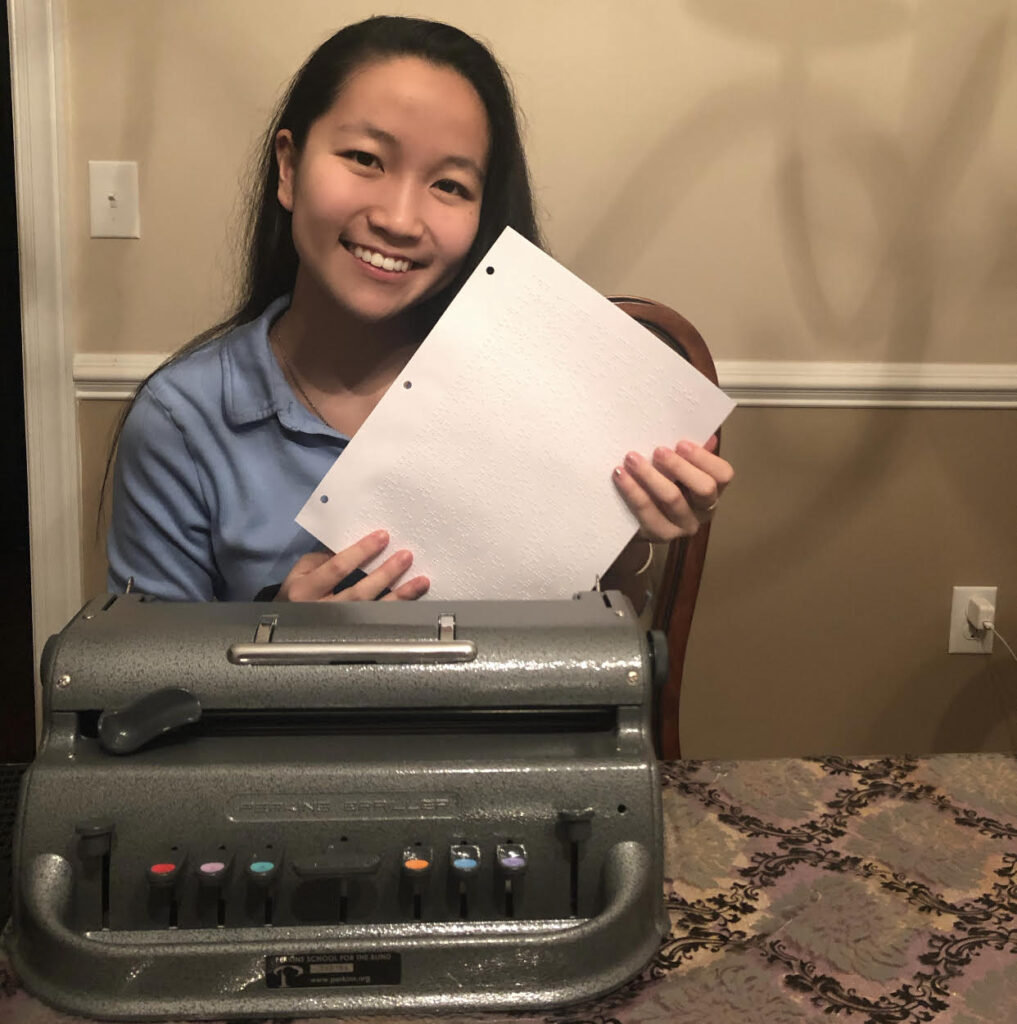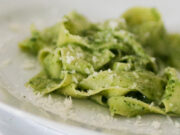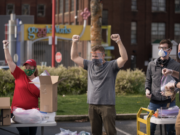Seventeen-year-old Amy Liu was always aware of blindness: Her grandmother, who shares her family home, is blind, and one of her friends lost her sight after being injured in a car accident. The more Liu learned about the practical, educational, and social divides between blind and sighted people, the more she wanted to help.
As a kid, she ran a lemonade stand to raise money. When the Bucks County native entered high school at Central Bucks High School South, she continued to look for ways to fundraise in her community. To that end, Liu founded Get In Touch!, a nonprofit dedicated to building connections between blind and sighted people, and reducing the barriers to education, employment, and independent living that blind people often face.
The organization raises money through grassroots efforts including partnerships with local restaurants and business owners, and social-media drives.
Now a high school senior, Liu is among 14 honorees of the Philly-based National Liberty Museum‘s 20th annual TD Bank Young Heroes Awards, a national program spotlighting kids and teens who “identified an area where liberty was lacking and took action to make positive change in their local schools or communities.”

The money raised via Get In Touch! goes primarily to two programs: distributing often-costly white canes for free to people who need them, and creating, publishing, and distributing a STEM-focused Braille magazine called SciBraille.
“I actually didn’t know what the Braille literacy crisis was until I started researching,” says Liu. Once she learned, she knew it would be a core focus area. According to a report from the National Federation of the Blind, only about 10 percent of blind people in the United States read Braille. There are huge cost barriers: A Braille typewriter can cost upwards of $1,000 and Braille books are expensive, with long wait times.
Seventy percent of blind adults in the U.S. are unemployed and half of blind high-school students end up dropping out. Students who are able to stay engaged often find themselves waiting for weeks for course materials like Braille textbooks, falling behind their sighted peers.
With a high correlation in the general population between low literacy and unemployment, boosting literacy in the blind community is especially important. Liu identified science as a field that is particularly inaccessible to blind people.
“Even today with sighted individuals, women in STEM [are] underrepresented,” says Liu of the gender gap in scientific fields. “But there’s even more of a deficit of blind people in STEM.”
SciBraille, with a few hundred copies published every two months or so by a team of volunteers, targets young people from middle school up through early college years. Because science textbooks are especially hard to get ahold of in Braille, Liu’s magazine features resources in fields such as chemistry, biology, physics, and computer science. Distributed for free to individual families and service organizations, the magazine aims to help close a gap for the students who need it most.
I actually didn’t know what the Braille literacy crisis was until I started researching.Amy Liu, Get In Touch!
Originally, the Get In Touch! team — a local network made mostly of students, but also including adults who want to lend a hand — typed each copy by hand on Liu’s Braille typewriter, but things are easier now with a Braille embosser.
In the organization’s early days, it mostly served people in the Reading and Philadelphia areas, but it’s developing more of a national and even international presence. Some of the canes Get In Touch! purchases go to community contacts in Liu’s family’s hometown in northern China, who distribute them to blind individuals in the region.
Liu has been connecting for years with the Keystone chapter of the National Federation of the Blind, participating in a buddy program that matches blind members with sighted peers. Before the pandemic, Liu and her team made frequent trips into Philadelphia.
“I do know that I want to continue this work in college,” say Liu. “I’m thinking right now on the tech side.”
She wants technology to be a more inclusive space for people with mental health problems, and the blind, deaf, and deaf-blind communities.
In the meantime, she urges everyone to do their part to make online spaces more accessible to all. If you publish an infographic, quote, or photo on social media, take a moment to write a simple image description in the text of your post, making your content available to people using screen readers. This is especially important today, she notes, as many people use social media to keep up on the latest about COVID-19.
“Think about other people who might want to access the same info as you,” she suggests. “It’s really important to make that information accessible.”
ALAINA JOHNS is a Philadelphia-based freelance writer and the Editor-in-Chief of BroadStreetReview.com, Philly’s hub for arts, culture and commentary.
Lead Image: Amy Liu stands smiling with her hands on her hips, wearing a blue t-shirt that reads, “Get In Touch! The fight continues.”



